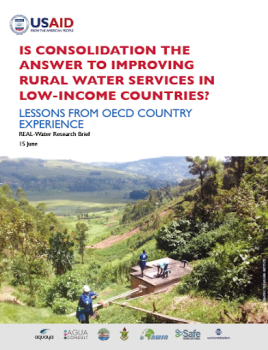LESSONS FROM OECD COUNTRY EXPERIENCE
Community-based management (CBM) emerged as the go-to strategy for governments to address rural water services after the UN International Drinking Water and Sanitation Decade. This model relied heavily on community involvement and financing, aiming for self-sustainability. However, since the early 2000s, the limitations of CBM have become increasingly evident. As a result, governments in low- and lower-middle-income countries are now actively exploring alternative management arrangements for rural water service provision.
In response to the challenges of the decentralized and fragmented nature of the rural water sector, a promising trend is emerging: consolidation. Governments are adopting approaches that involve grouping together rural water supply schemes into larger service areas or expanding the responsibilities of existing service providers across multiple regions.
The goal is to achieve economies of scale, increase the revenue base, reduce overhead costs, and mitigate risks associated with infrastructure failure. While this trend has been successfully implemented in some countries, achieving full coverage across all rural areas remains a long-term process. Nonetheless, consolidation presents an exciting opportunity to address the complexities of rural water service provision and pave the way for enhanced effectiveness.
By the REAL Water team.


